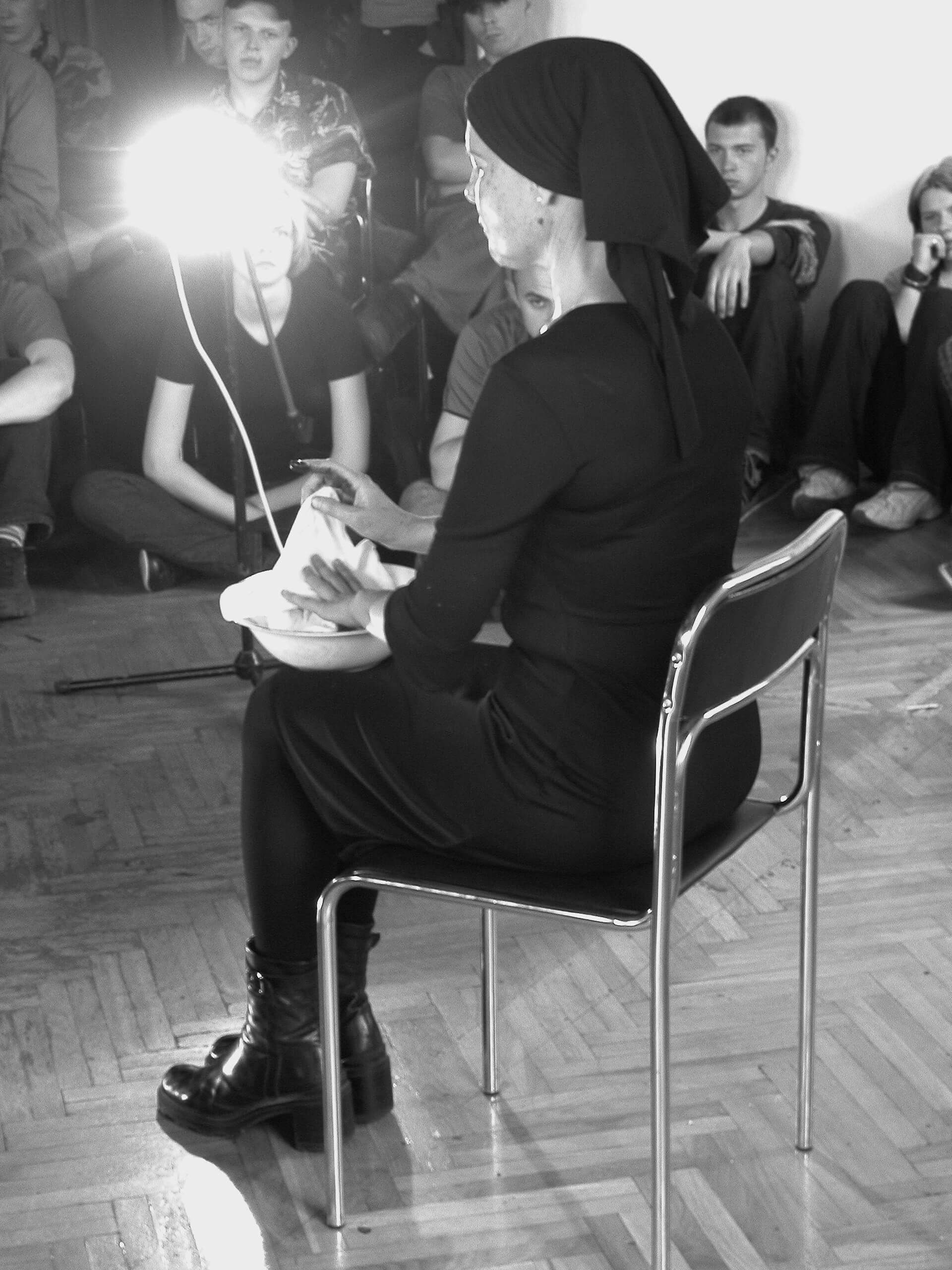Social Art Forum; Paris, France / Oct. 2003
Blurr, Biennale of Performance Art; Jaffa, Israel / Nov. 2003
Interaction Festival; Piotrkow Trybunaski, Poland / Feb. 2003
Krzysztofory Gallery; Krakow, Poland / 2003
Arsenal Gallery, ZCCA-Libusin; Bialystok, Poland / May 2003
Asiatopia, Performance Festival; Bangkok, Chiangmai / Nov. 2004
Auschwitz Jewish Center; Oswiecim, Poland / May 2004
Performance Art Conference; Essen, Germany / 2004
Artkontakt Gallery; Lublin, Poland / 2004
Lantern Theater; Philadelphia, USA / 2005
Mobius Art Series; Boston, USA / Nov. 2005

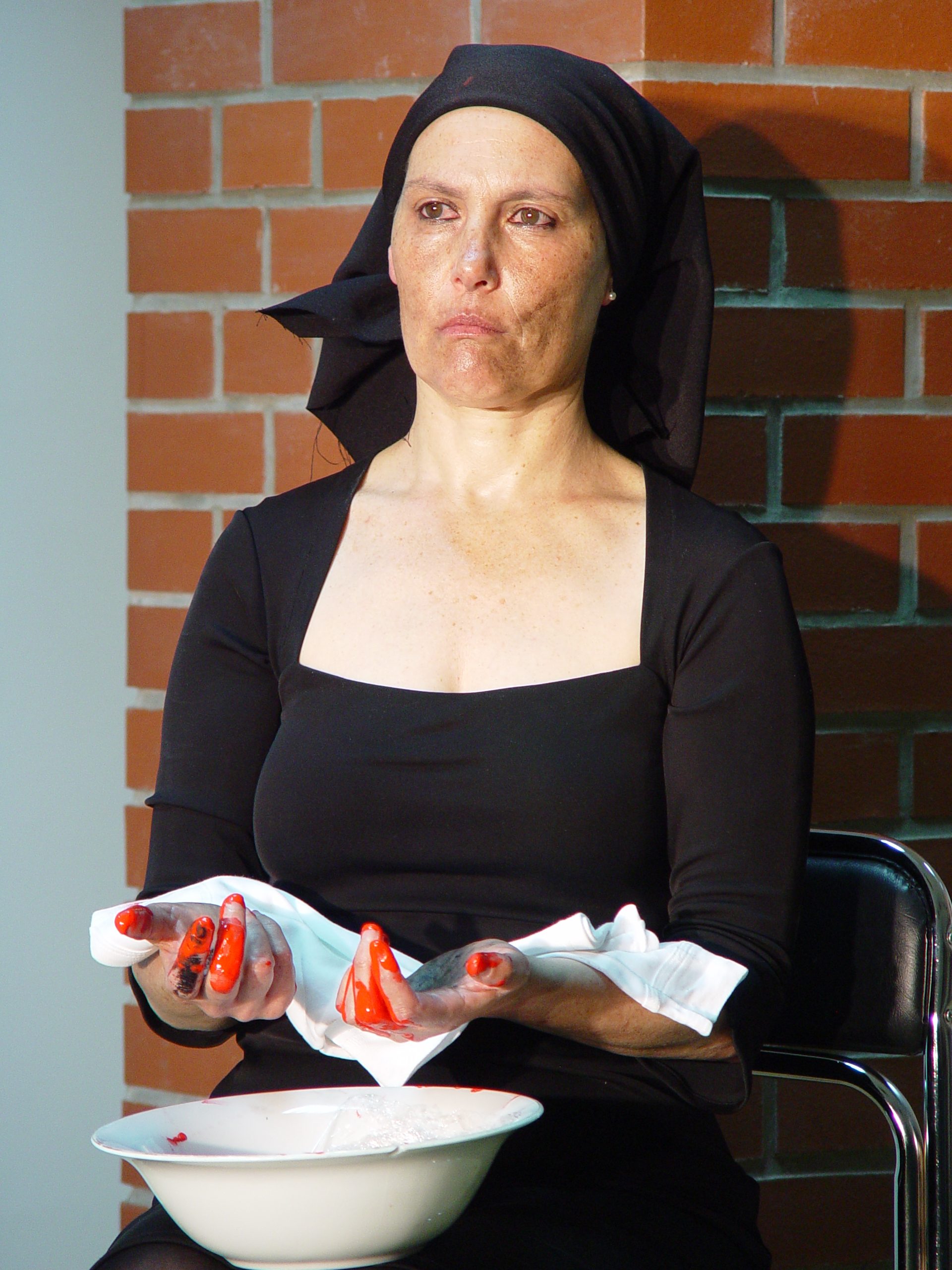













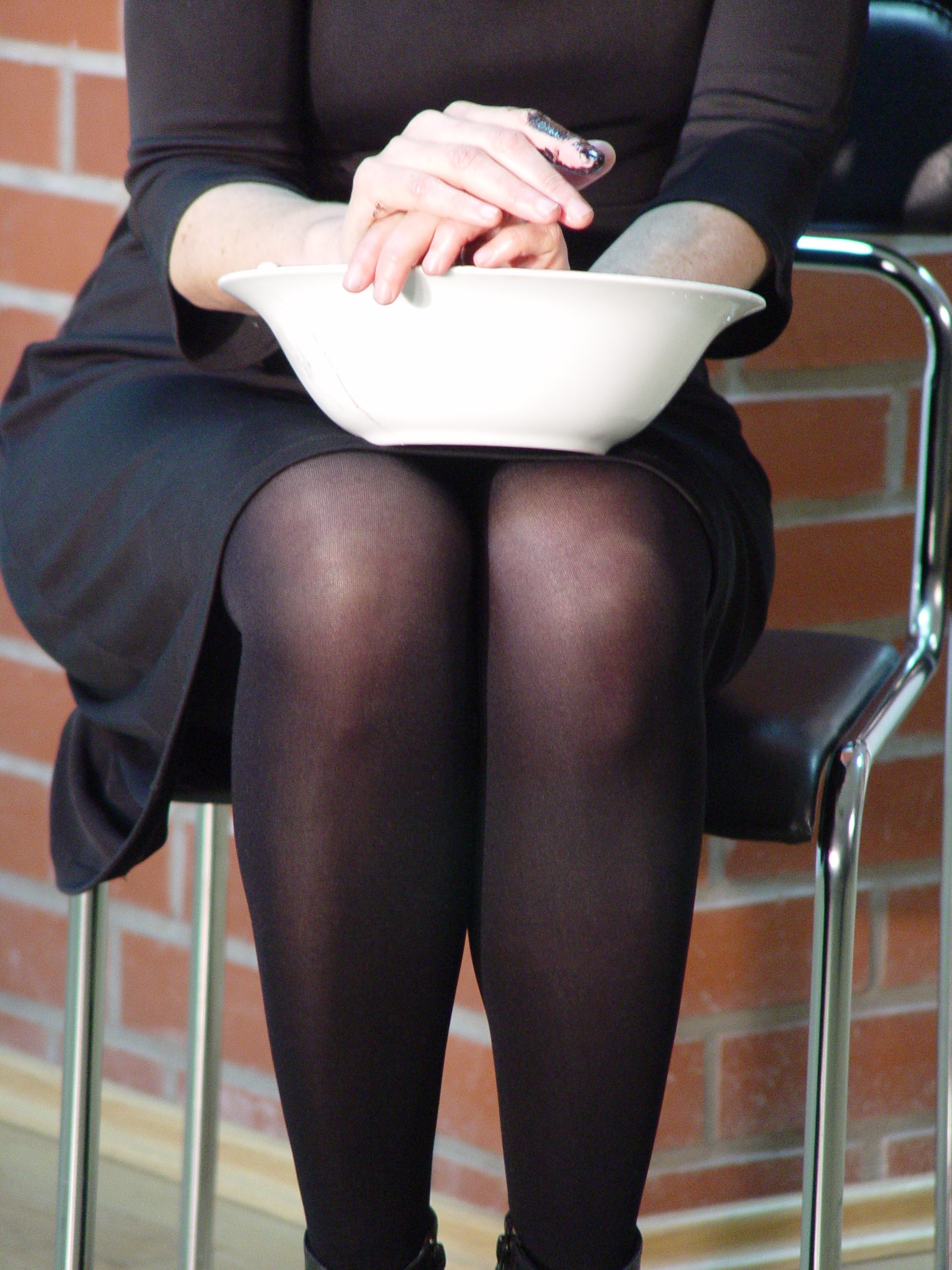



















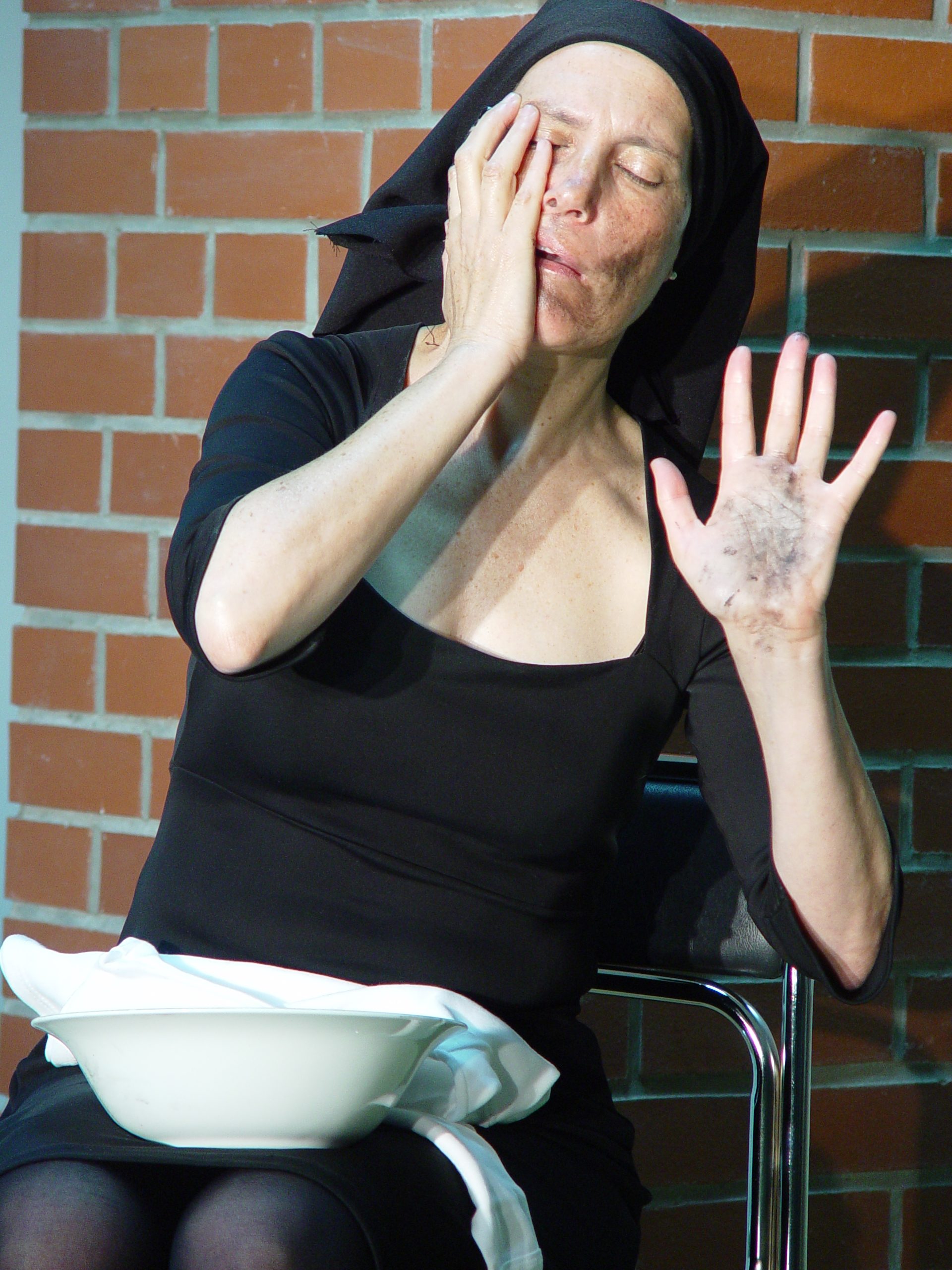
















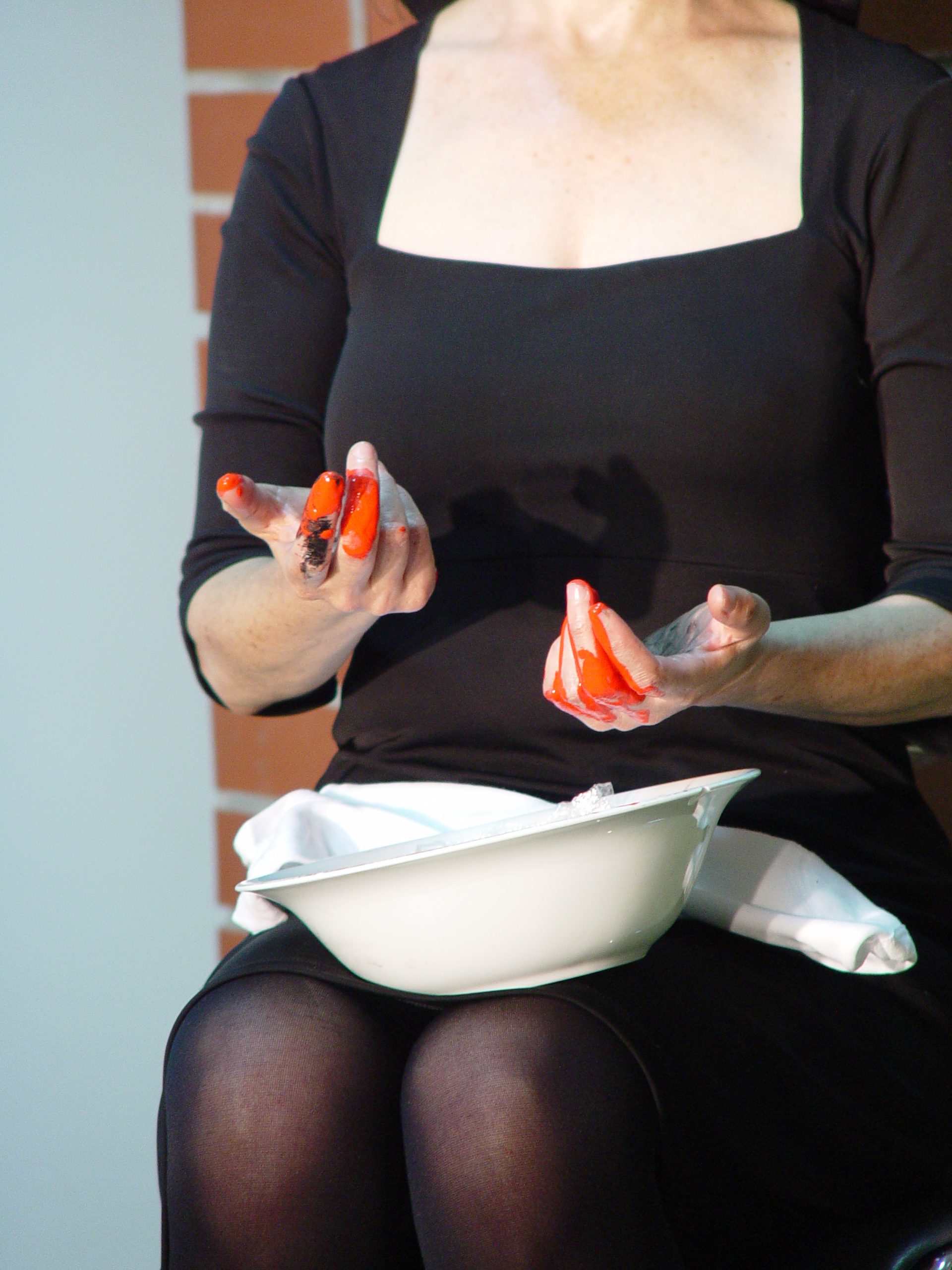


About Vision
Vision is the prototype of About Love.
The woman in black, which stands or sits by a chair, characterizes both works. Her shut eyes, the black painted finger, the white bowl which she maneuvers close to her body, the baby’s shirt, are all the common participants of the opening scenes in both of these performance-works.
Yet, for the majority of the 40-minute duration of Vision, my eyes are shut, until I open them at the final minutes of the performance. While in About Love my eyes are shut only during its 1st scene.
About Love proceeds for approximately three hours, in public spaces where chance viewers can observe from any varying distance and for the duration of any length of time. In contrast, Vision is a performance for an intimate group, of 30 persons, for whom I arrange the seating in an explicit manner. I pay attention to each viewer’s point of view so that each viewer’s range of vision remains, predefined, throughout the performance – as when viewing a painting, or through a camera’s frame or a photograph.
Finally, in Vision the scenes evolve, in consecutive order, until the third and final scene. In About Love, following the initial ordered sequence, I will change the order of scenes in each performance, their duration and add improvised movements.
1st scene of Vision
A Woman, dressed in black, with a black fabric covering her head, sits with her eyes shut. She holds a white porcelain bowl with both hands, and it is tilted towards her. Her fingers maneuver the bowl in slight angles, slowly, towards her body. Although her eyes are shut, she appears to be intent on the inside of the bowl as if observing its contents. Her fingers delicately and sensuously outline the thin rim of the porcelain bowl, and then gently caress its round shape.
One of the fingers on her left hand, the one used for pointing, is painted black from its tip, around to the nail, and down, to three cm below the nail. She plays with the visibility of the black mark when one of her hands disappears in the bowl; when one catches a glimpse of a knuckle or a black finger protruding over the bowl’s rim; when she combines the fingers in various compositions.
A white cloth appears in between her fingers and like in a ritual, the white appears in various forms; intertwined, bunched between her fingertips, or at another instance, tucked away inside the bowl with both of her hands hovering over.
The evolving arrangements of fingers, black mark, white fabric, and bowl, draw focus, until from the fragmented composition a defined geometric fabric emerges, held at both ends by the woman. Finally, the two hands will rise very slowly until they are completely upstretched; the white cloth will cover the woman’s face, and the outstretched hands will reveal an infant’s white shirt.
2nd scene
A woman rests the white bowl with the small shirt tucked within, on her lap. Her eyes continue to be shut. She allows her hands to drop to either side, and remains still for a moment .
Then she jerks as if awakened by a thought; her head moves, seeming to observe something close, in front of her; in minute nods, in the tension on her brow, crease in eyelids, wrinkle of lips, she appears to be ascertaining, perhaps measuring dimensions. Then she raises her hand, in a distance of an arm’s length from her face, and points a black finger which seems to be touching a surface which, of course, no one can see. Then, she tilts her head away from the invisible surface and in the direction of the seated audience, perhaps noticing her viewers – she smiles.
Next, she raises her other hand, and with the back of her hand she makes another contact, carefully, with an unseen surface. Her head seems to move forward, then she slightly raises it, her eyes shut but her eye sockets wide open, one may assume that she is qualifying the measurements. Then, she lets her arm rest on the bowl, takes in a deep breath and as her shoulders relax, she exhales.
The woman raises the black finger, and holding her finger parallel to one eye, she begins to draw an invisible line. Very carefully, with slow gasps of breath, she makes a small circle in the air. She faintly smiles as she is gazing at the circle which we assume she is seeing. It looks like she is bringing her head close to the circle she has traced; as if there is a real substance to it.
Her arms are raised as if trying to illustrate the unseen reality. Then, with even more concentration she makes a tiny circular motion with one hand, while with the other hand she continues to mark the outline of the larger circle she had seemingly traced already. She faintly smiles again as she is gazing at the circle which we assume she is seeing, and she brings her head closer to the circle she has traced – as if there is real substance there.
3rd Scene
The woman leans over the bowl which is on her knees. Both her hands shield the top of the bowl, and her head as if hovers over them. During the next minutes she remains bent over the bowl, and what is happening is undecipherable until she raises her head. When doing so, it is apparent that her hands are inside the bowl. With her head turned towards the audience, she opens her eyes slowly and gazes. In the beginning her gaze is blank, but it becomes sharp and focused, scanning each and every one of her viewers. As she gazes at her audience, she pulls out of the bowl two hands which are stained in red paint. She straightens her figure to an upright position. Seated, her head is erect, and she holds her soiled hands in front of her.
(approx. 40 min.)


















